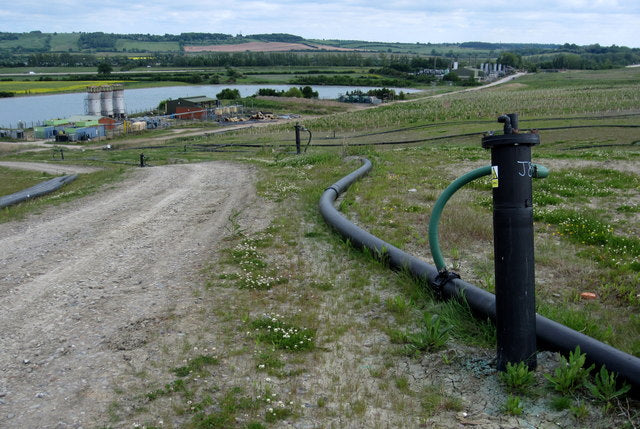News
Landfill Gas Monitoring Tips

Tips for Using Landfill Gas Monitoring Systems
In order to extract and collect landfill gas, and to reduce surface emissions and prevent migration of hazardous gases, specially designed landfill gas (LFG) systems need to be installed on landfill sites.
Some landfill operators collect LFG as it is a valuable source of energy. To ensure both environmental integrity and public safety, it is essential that proper controls are implemented, utilizing specialized LFG systems that are capable of the following:
- Monitoring collection systems of primary LFG well fields
- Controlling gas migration from the perimeter of LFG sites
- Monitoring and controlling gas migration at site boundaries and buildings situated within the landfill site.
It is essential that these systems are operated properly and that they are adequately monitored in order to maximize landfill gas extraction and reduce the likelihood of potential problems. This requires a landfill site technician to regularly collect data in order to make sound decisions and appropriate adjustments based on the data collected.
Landfill Gas Monitoring: Primary LFG Well Fields
The largest landfill gas extraction system consists of wells within the internal well field, which collect the majority of gas produced by the landfill. This well field using comprises several wells that are evenly spaced throughout the landfill. If, for some reason, certain sections of an active LFG system are shut off -- for example, due to filling -- this will result in the perimeter migration control system having to meet additional requirements. If the primary well field is not operated and managed appropriately, it can lead to excessive LFG atmospheric emissions, off site gas migration, and over pulling of the gas field, which can interrupt anaerobic decomposition processes within the landfill or cause fires below the surface of the landfill.
Depending on the conditions at the landfill and the landfill operators requirements, the frequency of LFG system monitoring could range from weekly to monthly monitoring sessions. Active landfills should be monitored at least once a month as conditions in the gas extraction system can change quite drastically over an extended period. To ensure optimal methane gas extraction from the landfill, it is imperative that a LFG well field system is monitored regularly, in a timely fashion, and that the monitoring sessions are thorough.
Landfill Gas Monitoring: Controlling Perimeter LFG Migration
The quality of the LFG collected from perimeter wells is typically poor quality, consisting of oxygen-rich gas, as a result of air intrusion at the landfill-soil interface. The objectives of the perimeter LFG system differ from those of the LFG collection system in the primary well field -- they provide the last chance to capture landfill gas and prevent it from escaping or migrating off site. However, because the depth of the landfill can change significantly on the perimeter, monitoring and controlling the quality of gas collected is problematic. Consequently, gas wells on the perimeter of the landfill collection system typically have their own separate monitoring system, and in some cases, migration control wells are installed into the soil adjacent to the landfill.
Perimeter migration wells are typically the most frequently monitored wells within the LFG system. They can be monitored weekly or bi-weekly, or in cases where LFG readings are high, they may be monitored daily. High oxygen levels on the periphery for Monitoring a Landfill Gas Field due to air intrusion can cause underground fires at landfills that have high LFG extraction rates. If the primary well field pulls and collects gas at the center of the well field, this will prevent gas from being drawn towards the perimeter LFG system, thus reducing the potential for gas migration. This alleviates pressure from the perimeter migration system, which will then only have to collect LFG generated at the periphery of the landfill rather than LFG that is migrating outwards from the center as well.
Landfill Gas Monitoring: Monitoring LFG Migration
In order to monitor and control LFG migration, gas detection probes need to be inserted (both deep and shallow) at key areas, such as along the landfill boundary or at admin/support buildings located on the landfill, and be monitored regularly using specialized landfill gas monitoring equipment. EPA regulations require readings to be taken at least every 3 months. However, it is recommended that when conditions are stable these readings should be taken monthly, but should a problem arise, daily readings may be necessary.
These regulations (EPA Subtitle D regulation) stipulate that methane levels must be kept under 5% -- the Lower Explosive Limit (LEL) for methane -- on the landfill boundary, and below 1.25% -- 25% of the LEL for methane -- at any building or structure (including drains and culverts) situated on or located near the landfill site. Should these safety levels be exceeded, the EPA Subtitle D stipulates what action needs to be taken to rectify the situation, including:
- implementing immediate measures to prevent a risk to human health and safety
- recording the data in the landfill operating records
- implementing a remediation strategy
- notify the EPA or state director within the given time frame
Featured Image by Philip Jeffrey and licensed for reuse under this Creative Commons Licence.


